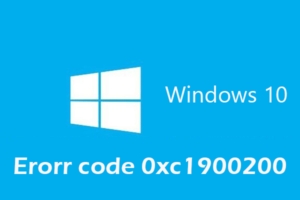-
Table of Contents
“In Windows 11, distinguishing between legitimate and adware becomes challenging.”
In Windows 11, the line between legitimate software and adware becomes increasingly blurred.
The Impact of Adware on User Experience in Windows 11
In the world of technology, adware has long been a nuisance for users. These unwanted advertisements can disrupt the user experience, slow down system performance, and even compromise the security of a device. With the release of Windows 11, however, the line between legitimate software and adware seems to be increasingly blurred. This article will explore the impact of adware on user experience in Windows 11, analyzing the potential consequences and offering insights into how users can protect themselves.
One of the most noticeable changes in Windows 11 is the increased integration of advertisements within the operating system. Microsoft has introduced a new feature called “Windows Spotlight,” which displays personalized ads on the lock screen. While this may seem like a harmless addition, it raises concerns about privacy and the intrusion of advertising into the user’s personal space. Users may find themselves bombarded with ads even before they have logged into their accounts, creating a less-than-ideal user experience.
Furthermore, Windows 11 includes a revamped Microsoft Store that allows developers to submit their own apps. While this may seem like a positive step towards a more diverse app ecosystem, it also opens the door for potentially malicious software to be distributed. Adware disguised as legitimate apps can easily find their way onto users’ devices, leading to a compromised user experience and potential security risks.
Another aspect of Windows 11 that blurs the line between legitimate software and adware is the increased use of notifications. Microsoft has introduced a new notification center that consolidates all notifications from various apps and services. While this can be convenient for users, it also provides an opportunity for adware to infiltrate the system. Users may find themselves bombarded with notifications promoting products or services, further detracting from their overall user experience.
To protect themselves from the potential negative impact of adware in Windows 11, users should take proactive measures. First and foremost, it is crucial to exercise caution when downloading and installing apps from the Microsoft Store. Users should research the developer and read reviews before proceeding with the installation. Additionally, it is advisable to use reputable antivirus software that can detect and remove adware from the system.
Furthermore, users can customize their notification settings to minimize the intrusion of unwanted advertisements. By selectively enabling notifications only for essential apps and services, users can reduce the likelihood of being bombarded with ads. Regularly reviewing and managing installed apps and removing any suspicious or unnecessary ones can also help maintain a clean and adware-free system.
In conclusion, the release of Windows 11 has brought about a blurring of the line between legitimate software and adware. The increased integration of advertisements within the operating system, the revamped Microsoft Store, and the use of notifications all contribute to a potentially compromised user experience. However, by taking proactive measures such as exercising caution when downloading apps, using reputable antivirus software, and customizing notification settings, users can protect themselves from the negative impact of adware. It is essential for users to remain vigilant and stay informed about the potential risks associated with adware in Windows 11 to ensure a smooth and secure computing experience.
Identifying and Removing Adware in Windows 11
In Windows 11, the line between legitimate software and adware has become increasingly blurred. Adware, short for advertising-supported software, refers to programs that display unwanted advertisements on a user’s computer. While some adware may be harmless, others can be intrusive, compromising user privacy and system performance. Identifying and removing adware in Windows 11 has become a crucial task for users to maintain a secure and efficient computing experience.
One of the challenges in identifying adware in Windows 11 is the growing sophistication of these programs. Adware developers have become adept at disguising their software as legitimate applications, making it difficult for users to distinguish between the two. Often, adware is bundled with free software downloads, and users unknowingly install it alongside the desired program. This deceptive practice is known as “bundling,” and it has become a common method for distributing adware.
To identify adware in Windows 11, users should be vigilant when installing new software. Reading the terms and conditions and carefully reviewing the installation process can help uncover any bundled adware. Additionally, it is essential to download software from trusted sources and avoid third-party websites that may distribute adware-infected programs.
Once adware has been identified, removing it from Windows 11 is crucial to restore system performance and protect user privacy. Windows 11 provides built-in tools to help users combat adware effectively. The Windows Security app, for instance, offers a comprehensive suite of security features, including real-time protection against adware and other malicious software. Regularly scanning the system with Windows Security can help detect and remove adware infections.
In addition to built-in tools, there are several reputable third-party antivirus and anti-malware programs available for Windows 11. These programs offer advanced scanning capabilities and can detect adware that may go unnoticed by built-in security tools. Users should choose a reliable and well-known antivirus program and keep it updated to ensure maximum protection against adware and other threats.
In some cases, adware may persist even after using built-in or third-party security tools. This is where specialized adware removal tools can be helpful. These tools are designed specifically to target and remove adware from Windows 11 systems. They employ advanced scanning algorithms to detect and eliminate adware components that may be deeply embedded within the system.
Prevention is always better than cure when it comes to adware. Users can take proactive measures to minimize the risk of adware infections in Windows 11. Regularly updating the operating system and installed software is crucial, as updates often include security patches that address vulnerabilities exploited by adware developers. Additionally, exercising caution when downloading and installing software, especially from unfamiliar sources, can significantly reduce the chances of adware infiltration.
In conclusion, the line between legitimate software and adware has become increasingly blurred in Windows 11. Identifying and removing adware is essential to maintain a secure and efficient computing experience. Users should be vigilant during software installations, rely on built-in security tools, and consider using reputable third-party antivirus programs. Specialized adware removal tools can be employed if adware persists. By adopting preventive measures and staying informed about the latest adware threats, users can protect their Windows 11 systems from unwanted advertisements and potential privacy breaches.
The Rise of Legitimate Advertisements in Windows 11
In the world of technology, advertisements have become an integral part of our daily lives. Whether we are browsing the internet, using mobile applications, or even using our operating systems, advertisements seem to be everywhere. Windows 11, the latest operating system from Microsoft, is no exception to this trend. However, what sets Windows 11 apart is the increasing blurring of the line between legitimate advertisements and adware.
One of the key features of Windows 11 is the integration of Microsoft Store with the operating system. This integration allows users to easily access and download applications directly from the store. While this may seem like a convenient feature, it also opens the door for advertisements to be displayed within the store itself. These advertisements, often labeled as “sponsored,” can sometimes be misleading and may lead users to download potentially unwanted applications.
Furthermore, Windows 11 introduces a new feature called “Widgets.” These widgets provide users with personalized information such as news, weather updates, and calendar events. However, these widgets also display advertisements, which can sometimes be intrusive and disrupt the user experience. While Microsoft claims that these advertisements are carefully curated and relevant to the user’s interests, many users find them to be intrusive and unnecessary.
Another area where the line between legitimate advertisements and adware becomes blurred in Windows 11 is the Start Menu. In previous versions of Windows, the Start Menu was a place for users to access their applications and settings. However, in Windows 11, the Start Menu now includes a section called “Recommended” that displays suggested applications and content. While these recommendations may seem harmless, they are essentially advertisements for Microsoft’s own products and services. This raises concerns about the objectivity of these recommendations and whether they truly benefit the user or are simply a way for Microsoft to promote its own offerings.
Additionally, Windows 11 introduces a new feature called “Snap Layouts” that allows users to easily organize and multitask with multiple windows. While this feature is undoubtedly useful, it also opens the door for advertisements to be displayed alongside the user’s open windows. These advertisements, often in the form of pop-ups or banners, can be distracting and disrupt the user’s workflow. This blurring of the line between legitimate advertisements and adware can make it difficult for users to distinguish between what is genuinely useful and what is simply a ploy to generate revenue.
In conclusion, Windows 11 brings with it a new wave of advertisements that blur the line between legitimate advertisements and adware. From the integration of advertisements within the Microsoft Store to the inclusion of sponsored content in the Start Menu, these advertisements can sometimes be misleading and intrusive. While Microsoft claims that these advertisements are carefully curated and relevant to the user’s interests, many users find them to be disruptive and unnecessary. As technology continues to evolve, it is important for users to remain vigilant and discerning when it comes to advertisements in order to protect their privacy and ensure a seamless user experience.
Balancing User Privacy and Adware in Windows 11
In the digital age, user privacy has become a hot topic of discussion. With the release of Windows 11, Microsoft’s latest operating system, the line between legitimate software and adware has become increasingly blurred. This article aims to explore the delicate balance between user privacy and adware in Windows 11, analyzing the implications for both users and advertisers.
Windows 11 introduces several new features and enhancements that promise a more seamless and personalized user experience. However, some of these features come at the cost of increased data collection and targeted advertising. One such feature is the integration of Microsoft’s personal digital assistant, Cortana, into the operating system. While Cortana can provide helpful suggestions and reminders, it also collects vast amounts of user data to tailor its recommendations. This data collection raises concerns about user privacy and the potential for misuse by advertisers.
Another area where the line between legitimate software and adware becomes blurred in Windows 11 is the inclusion of pre-installed apps and services. While these apps may offer convenience and functionality, they often come bundled with advertisements or collect user data for targeted advertising purposes. This practice has sparked debates about the ethics of pre-installed software and the extent to which users should have control over their own devices.
Furthermore, Windows 11 introduces a new advertising platform called Windows Spotlight. This feature displays personalized ads on the lock screen, providing advertisers with a prime opportunity to reach users directly. While Microsoft claims that these ads are carefully curated and non-intrusive, some users may find them invasive and unwanted. The inclusion of such advertising platforms raises questions about the balance between user privacy and the need for revenue generation.
To address these concerns, Microsoft has implemented privacy settings in Windows 11 that allow users to control the extent of data collection and targeted advertising. Users can choose to opt out of personalized ads, limit data sharing with third-party advertisers, and even disable certain features altogether. These privacy settings provide users with a degree of control over their own data and help mitigate the potential risks associated with adware.
However, striking the right balance between user privacy and adware is a complex task. Advertisers rely on targeted advertising to reach their intended audience, and personalized recommendations can enhance the user experience. At the same time, users have a right to privacy and should not feel bombarded by unwanted ads or have their personal information exploited.
In conclusion, Windows 11 presents a challenge in balancing user privacy and adware. While the operating system offers new features and enhancements, it also raises concerns about data collection and targeted advertising. Microsoft’s privacy settings provide users with some control over their data, but the line between legitimate software and adware remains blurred. As technology continues to evolve, it is crucial for both users and advertisers to engage in an ongoing dialogue to ensure that privacy concerns are addressed while still allowing for personalized experiences.
Strategies for Protecting Against Adware in Windows 11
In the world of technology, the line between legitimate software and adware has always been a bit blurry. However, with the release of Windows 11, this line seems to be becoming even more indistinct. Adware, which is software that displays unwanted advertisements, has been a nuisance for Windows users for years. But now, with the new operating system, it seems to be infiltrating our computers in more subtle and deceptive ways.
One of the main strategies for protecting against adware in Windows 11 is to be cautious when downloading and installing software. In the past, users could rely on trusted sources like the Microsoft Store to find safe and legitimate applications. However, with the introduction of the new Microsoft Store in Windows 11, this trust has been shaken. The new store allows developers to submit unpackaged Win32 applications, which means that they can bypass Microsoft’s rigorous screening process. This opens the door for potentially malicious software to make its way onto your computer.
To protect against this, it is important to only download software from trusted sources. Stick to well-known websites and reputable app stores, and always read reviews and check ratings before downloading anything. Additionally, be wary of any software that promises free or discounted versions of popular applications. These are often a breeding ground for adware and other unwanted programs.
Another strategy for protecting against adware in Windows 11 is to keep your operating system and all installed software up to date. Adware often takes advantage of vulnerabilities in outdated software to gain access to your computer. By regularly updating your operating system and applications, you can ensure that you have the latest security patches and bug fixes, making it harder for adware to find a way in.
In addition to keeping your software up to date, it is also important to use a reliable antivirus program. While Windows 11 does come with built-in security features, it is always a good idea to have an extra layer of protection. Look for an antivirus program that offers real-time scanning and protection against adware specifically. Regularly scan your computer for any potential threats and remove any adware that is detected.
Furthermore, it is crucial to be mindful of the permissions you grant to applications in Windows 11. Adware often disguises itself as legitimate software and tricks users into granting unnecessary permissions. When installing a new application, carefully review the permissions it requests and consider whether they are necessary for the app’s functionality. If something seems suspicious or unnecessary, it is best to err on the side of caution and deny the permission.
Lastly, it is important to educate yourself about the latest adware trends and tactics. Adware is constantly evolving, and new techniques are being developed all the time. Stay informed about the latest threats and learn how to recognize the signs of adware on your computer. By staying vigilant and proactive, you can better protect yourself against adware in Windows 11.
In conclusion, the line between legitimate software and adware in Windows 11 is becoming increasingly blurred. To protect against adware, it is important to be cautious when downloading software, keep your operating system and applications up to date, use reliable antivirus software, be mindful of permissions, and stay informed about the latest adware trends. By implementing these strategies, you can help safeguard your computer and maintain a secure computing environment.
Q&A
1. What is adware?
Adware refers to software that displays advertisements on a user’s device, often without their consent or knowledge.
2. How does Windows 11 blur the line between legitimate software and adware?
Windows 11 introduces new features and changes that may make it harder to distinguish between legitimate software and potentially unwanted programs that display excessive or intrusive advertisements.
3. What are some examples of features in Windows 11 that contribute to this blurring?
Windows 11 includes a redesigned Microsoft Store that allows third-party apps, potentially including adware, to be easily downloaded. Additionally, the new “recommended apps” feature may promote certain apps that could contain adware.
4. Why is it important to differentiate between legitimate software and adware?
Differentiating between legitimate software and adware is crucial for maintaining a secure and user-friendly computing environment. Adware can compromise privacy, slow down devices, and negatively impact user experience.
5. What steps can users take to protect themselves from adware in Windows 11?
To protect against adware in Windows 11, users should be cautious when downloading apps from the Microsoft Store or other sources. It is recommended to research apps before installing them, use reputable antivirus software, and regularly update their operating system and security software.In Windows 11, the line between legitimate and adware becomes increasingly blurred.







![[Solved]: “Error Code 0xC004F050” in Windows 11 in No Time](https://www.tipsbin.net/wp-content/uploads/2023/08/8e64f519d2390bfc001a41744be2cbd4-300x199.jpeg)

